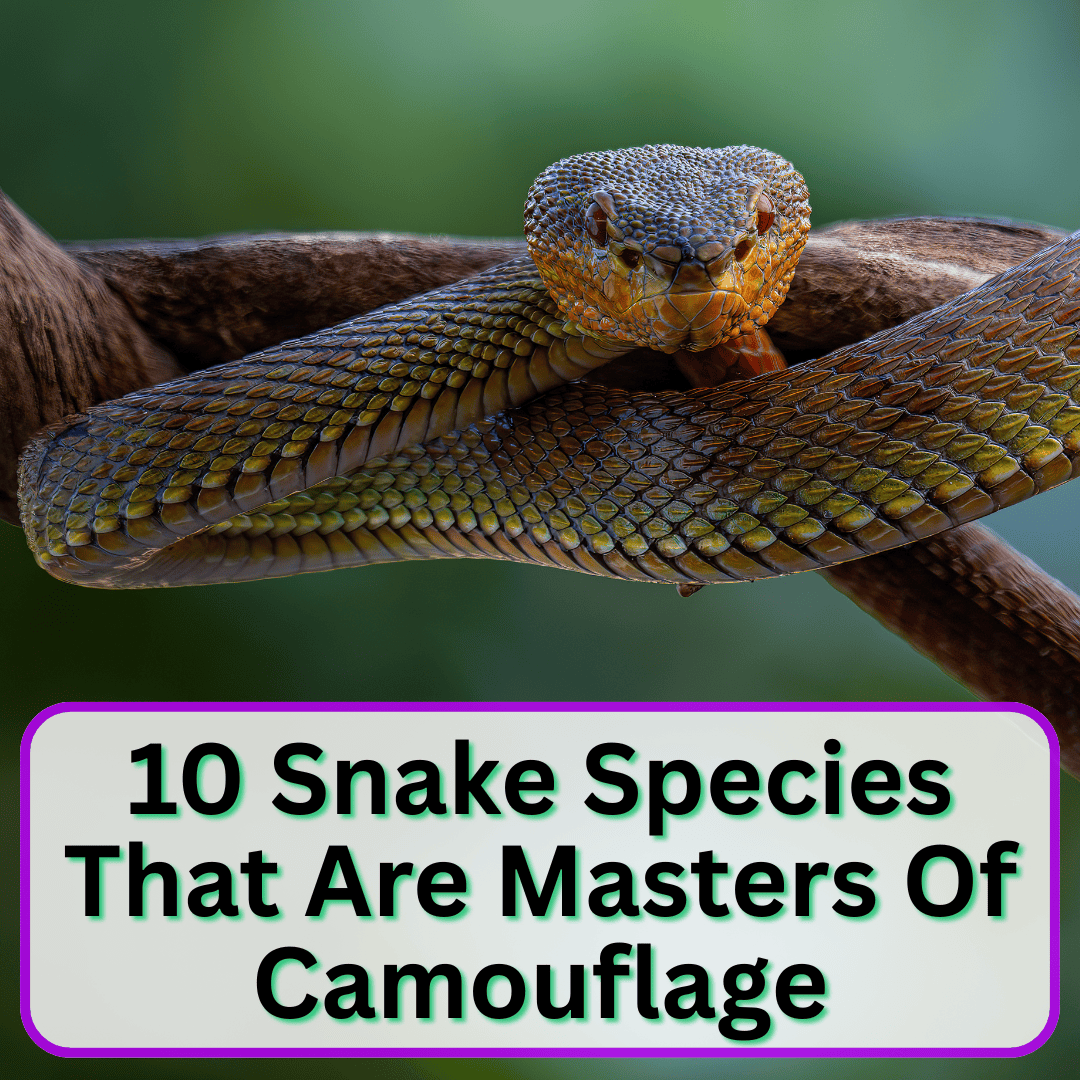
Many have learned amazing ways to blend into their surroundings.
These sneaky reptiles use colors, patterns, and body shapes that make them nearly impossible to spot until you’re right next to them.
From forests to deserts, you’ll find snakes that look just like twigs, leaves, or rocks.
Some even change their appearance to match what’s around them.
This makes them masters of ambush hunting.
Whether they’re hiding from danger or waiting to catch their next meal, these master disguise artists show just how clever nature can be.
Snakes That Are Masters Of Camouflage
All of the following snake species have taken the art of camouflage to the next level. When they don’t want to be seen, it is almost impossible to spot them.
1. Ahaetulla Sahyadrensis (Sahyadri Vine Snake)
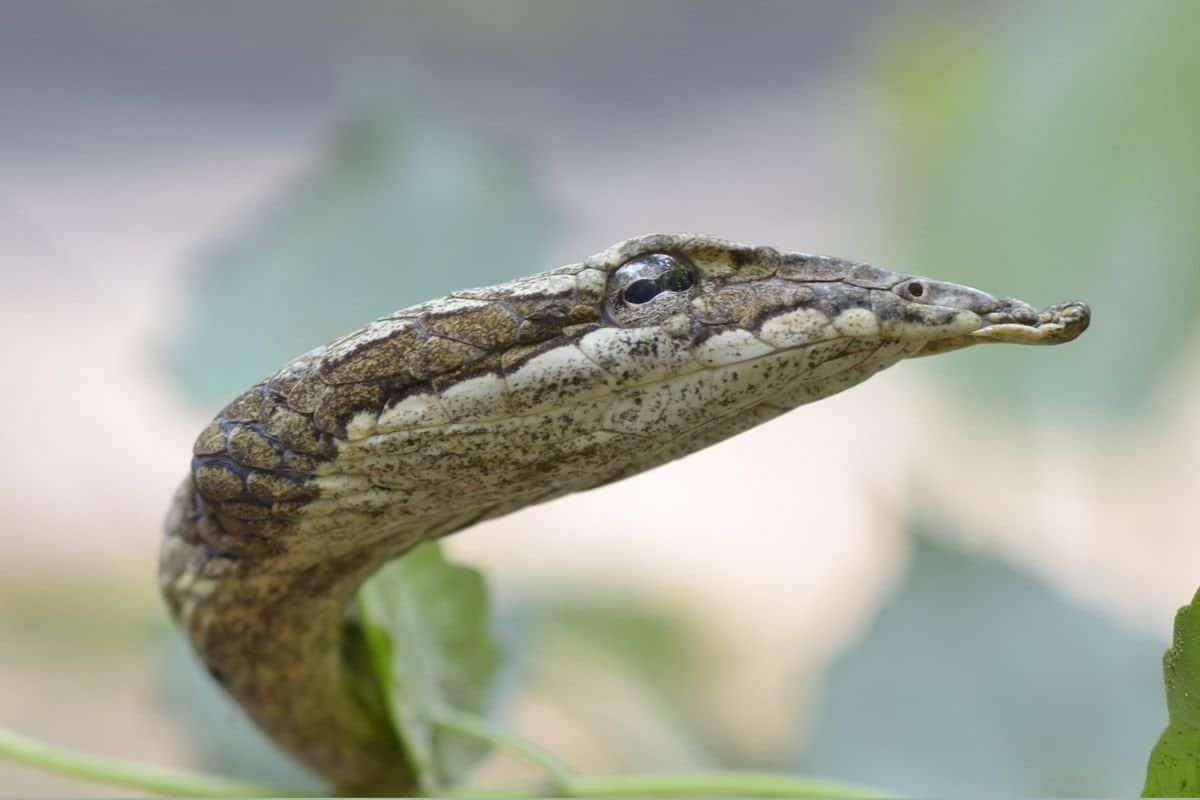
This amazing snake hides out in the Western Ghats of India and looks uncannily like a thin tree branch. The Sahyadri vine snake is brown instead of green, which is unusual for vine snakes. That brown color lets it blend perfectly with dead branches and bark. You could easily walk right by one and never notice.
It’s only found in the Western Ghats mountains—nowhere else on earth. Scientists call this being “endemic” to an area. But don’t worry if you see one; it’s completely non-venomous and prefers to stay out of sight rather than bother anyone.
You can tell it apart from its green cousin, the Asian vine snake. While the green one mimics living leaves, the Sahyadri vine snake copies dry branches instead. It’s a clever way to stay safe from birds and other predators.
The snake’s long, thin body just adds to the illusion. When it stays still, it’s almost impossible to tell it apart from a real dead branch.
2. Rough Earth Snake
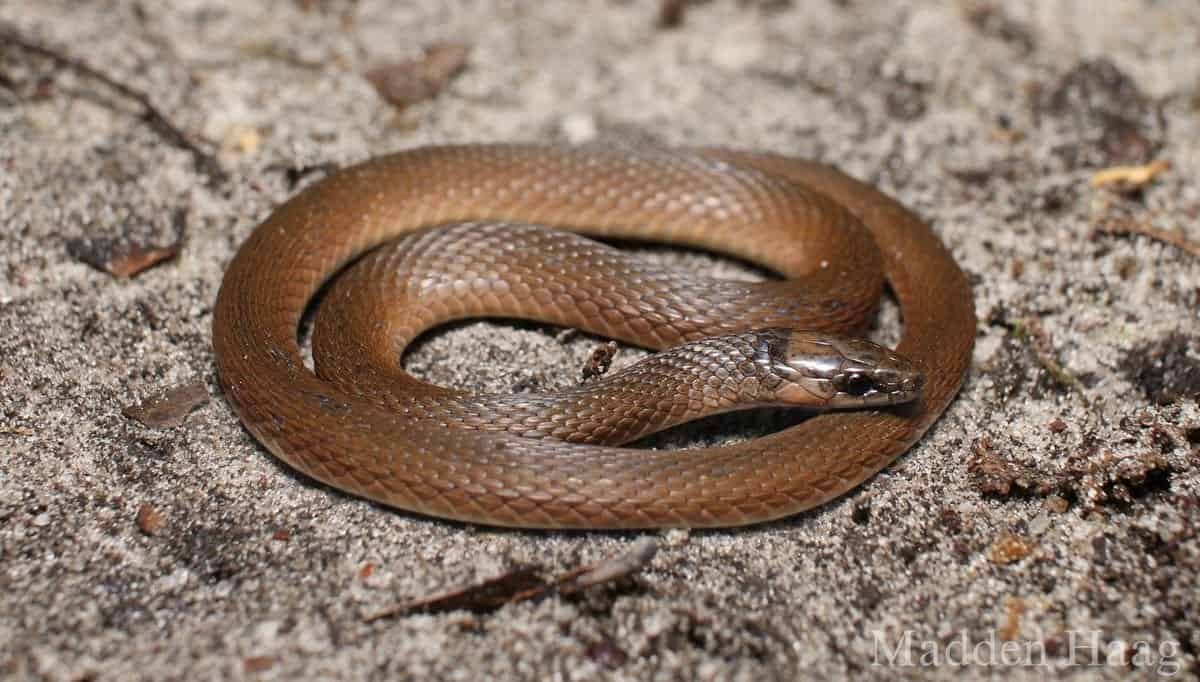
The rough earth snake is so good at hiding, you might have walked past one dozens of times and never realized it. This tiny snake measures just 7 to 10 inches long and gets its name from its keeled, rough-feeling scales. Those textured scales help it blend right in with the forest floor.
It lives in wooded areas across the southeastern United States, hiding under leaves, logs, and debris where it becomes nearly invisible. Its brown or grayish-brown color makes it look like a twig or dead leaf—most people just assume it’s part of the scenery.
If you want to spot one, you’ll need sharp eyes and a lot of patience. The rough earth snake rarely ventures out into the open during the day. It’s harmless to humans and spends its time eating tiny worms and soft-bodied insects in the soil and leaf litter.
This snake’s camouflage is so effective that even experts have trouble finding them. There could be a whole population living nearby and you’d never know.
3. Western Diamondback Rattlesnake
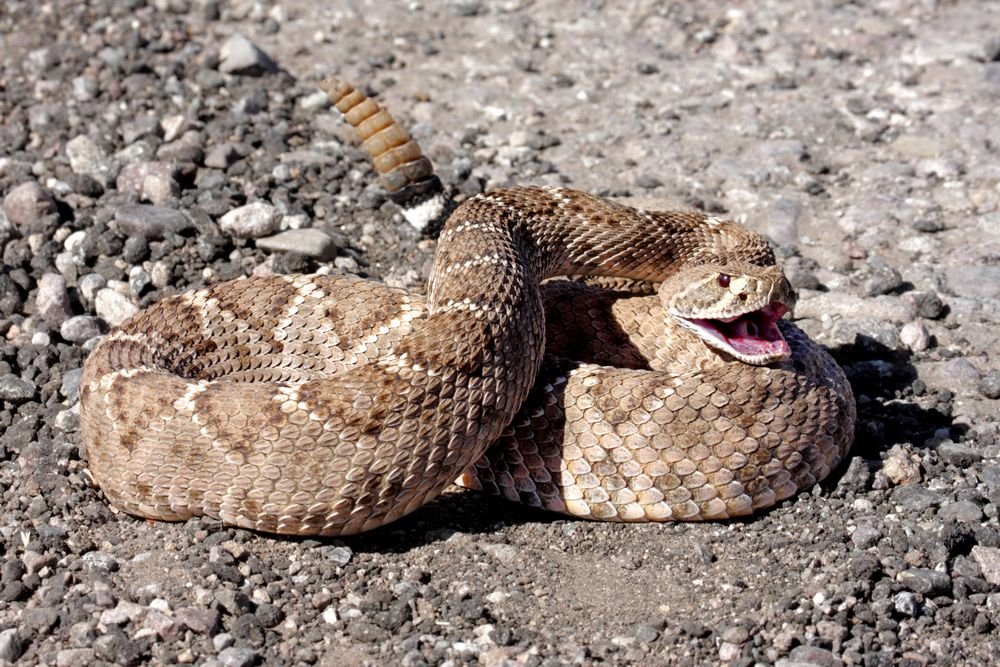
The western diamondback rattlesnake lives across the southwestern United States and Mexico. It really knows how to disappear into its surroundings. Diamond-shaped markings along its back help it blend in with rocky ground and desert brush.
With its gray and brown colors, it matches desert rocks and dry vegetation perfectly. When it’s coiled up, it just looks like another pile of rocks. That camouflage helps it hunt small animals like rodents and birds.
The snake stays motionless when hiding, waiting for prey to come close before striking with its venomous bite. You have to watch your step in rattlesnake country—these guys are tough to spot until you’re right on top of them.
It’s one of the most widespread rattlesnakes in North America, surviving in harsh desert environments thanks to its sneaky hiding skills.
4. Pacific Gopher Snake
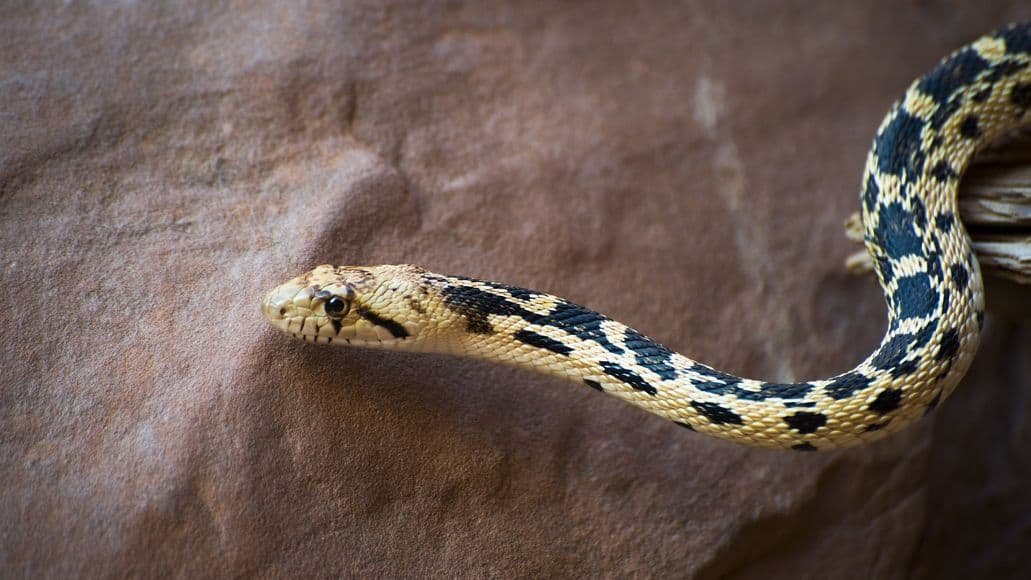
Pacific Gopher Snakes are experts at vanishing into their surroundings along the western coast of North America. They have rough, scaly skin with brown and tan patterns that match dry grass, dirt, and rocks.
These snakes live throughout California and other western states, often hiding in places where their colors help them disappear. They’re non-venomous and can grow surprisingly large—sometimes up to nine feet long. Even so, they manage to stay hidden from both prey and predators.
People often confuse Pacific Gopher Snakes with rattlesnakes because of their similar patterns. In fact, they’ll even mimic rattlesnake behavior when threatened to scare off enemies.
Next time you’re hiking in the west, keep an eye on the ground near rocks and bushes. You might spot one of these masters of camouflage if you look closely. Their hiding skills are so impressive that photographers use them for “spot the snake” challenges. Think you’d find it?
5. Brown Vine Snake
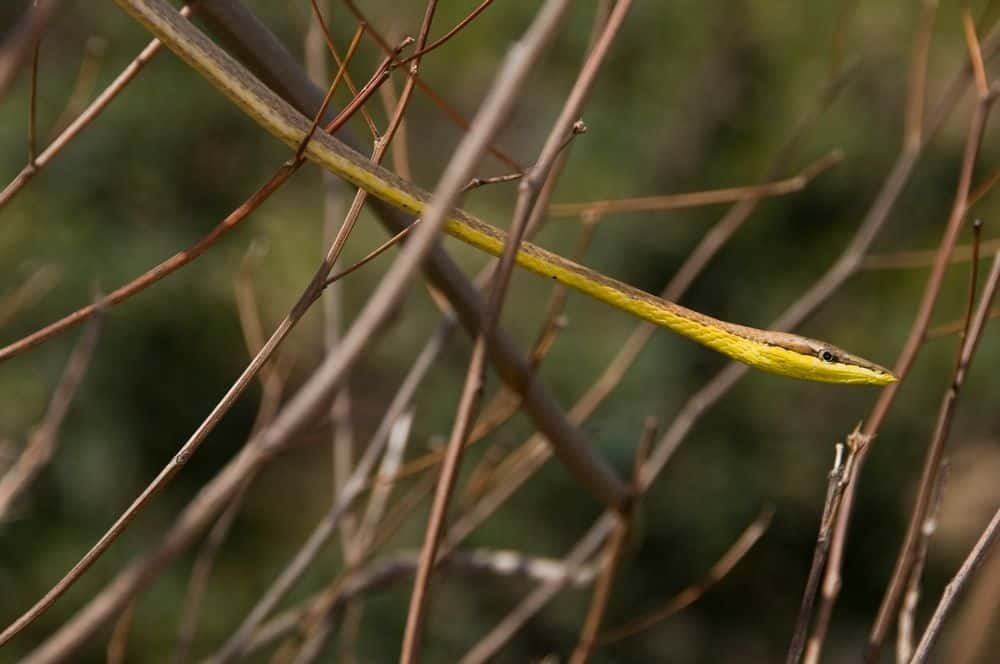
Think all vine snakes are green? The brown vine snake says otherwise. It uses brown and gray colors to blend in with tree branches and dried vines. Its body is so thin it could pass for a twig, and when it stays still among branches, you’d probably walk right past it.
This snake lives in forests across the Americas. Its bronze-gray and olive colors let it vanish among dead branches and bark. You’ll often find brown vine snakes hanging motionless in trees, waiting for small birds or lizards to wander too close.
Its pointed head and slender shape make it look exactly like part of the tree. Even snake experts miss them sometimes. When looking for brown vine snakes, remember they don’t always stick to green plants—they choose hiding spots where brown and gray work best.
They grow about three to six feet long. That, plus their disguise, makes them stand out as some of nature’s top hide-and-seek champs.
6. Scarlet Kingsnake
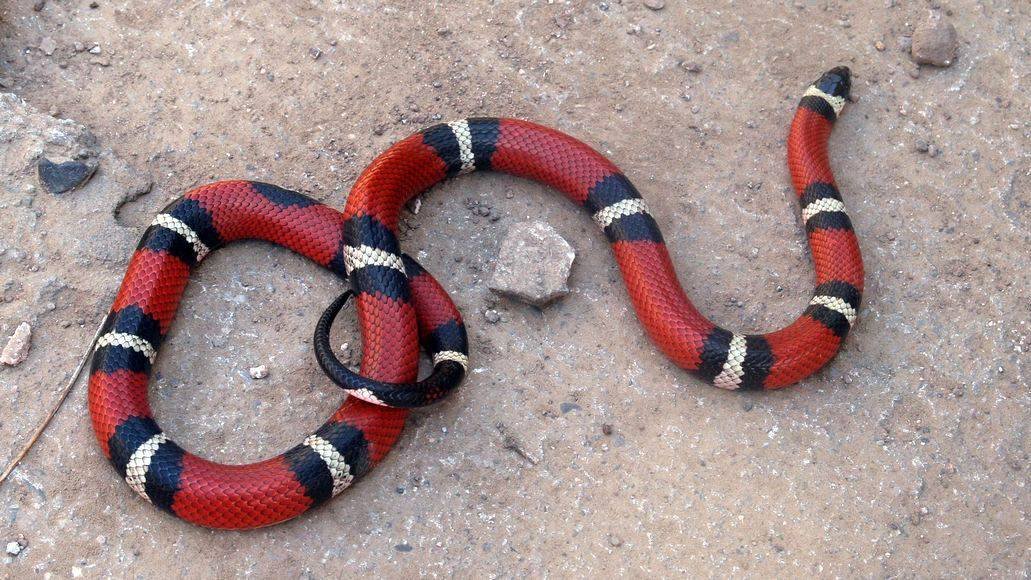
This colorful snake wants you to think it’s dangerous. The scarlet kingsnake uses bright red, black, and yellow bands to trick predators into thinking it’s a venomous coral snake.
This is called Batesian mimicry—the harmless scarlet kingsnake copies the warning colors of the deadly coral snake, so predators see those colors and steer clear. You’ll find scarlet kingsnakes in the southeastern United States, living in forests, fields, and rocky places where their banded pattern helps them blend with shadows and leaves.
They’re harmless to humans and actually do us a favor by eating other snakes—including venomous ones. Most of their diet consists of skinks. Their camouflage does double duty: the bright bands confuse would-be predators, and the pattern breaks up their body shape when hiding under logs or in leaf litter.
If you want to tell them apart from coral snakes, remember: red touches black on the harmless kingsnake.
7. Asian Vine Snake
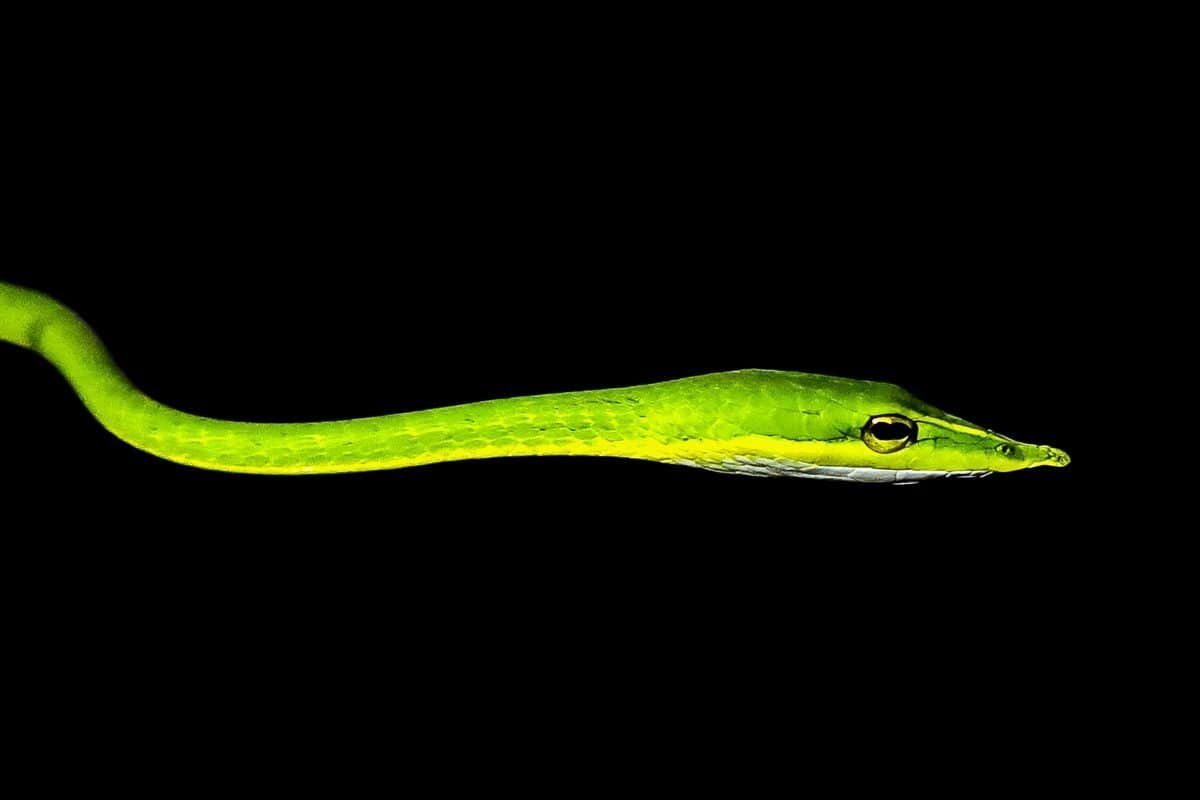
The Asian vine snake lives in the forests of Southeast Asia—places like Thailand, Vietnam, Malaysia, and Singapore. Its bright green color matches jungle plants perfectly, and its body is so thin you could mistake it for a vine or branch.
These snakes can grow up to 6.5 feet long and have a pointed snout with unusual keyhole-shaped pupils. Most snakes have round or slit pupils, so this stands out. Asian vine snakes hunt during the day, eating lizards and frogs among the branches. Their thin bodies let them move easily through the trees.
When coiled up, they mimic leaf veins and plant patterns. They don’t just blend in—they actually change their body posture to match nearby plants. They’re mildly venomous, but not dangerous to people, with rear fangs that have grooves instead of hollow points.
8. Twig Snake
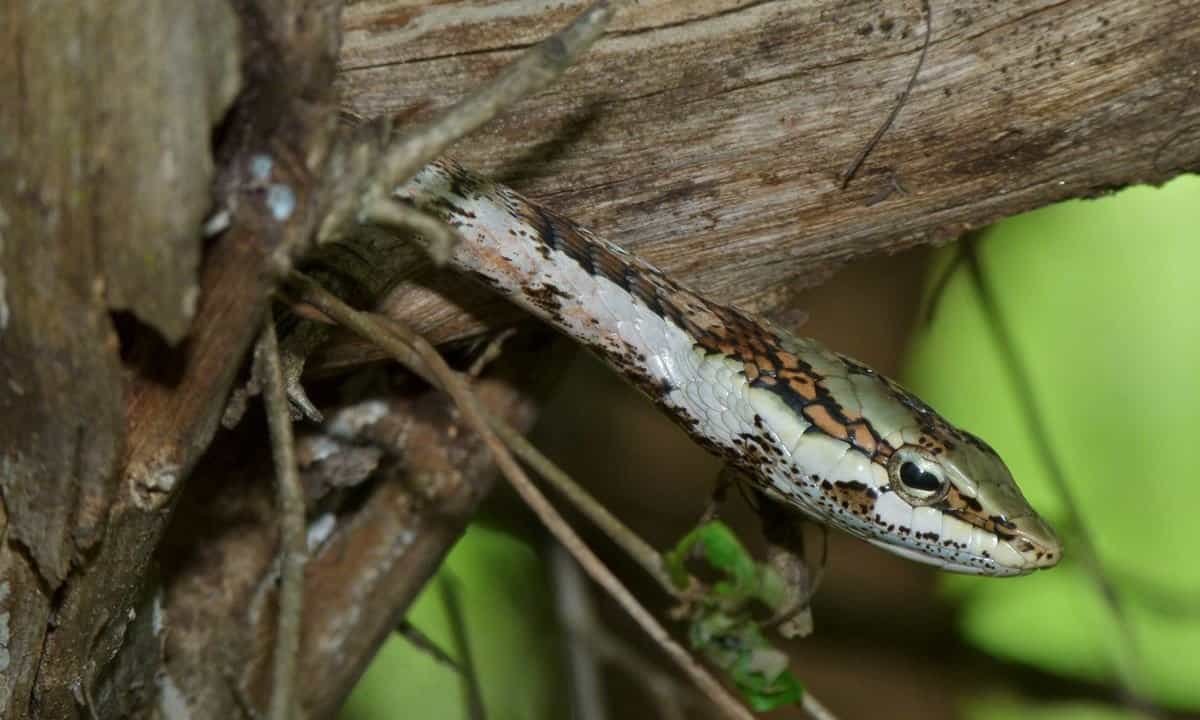
The twig snake is so well-camouflaged, you could stare right at one and never realize it. These slender reptiles look just like branches and twigs, coming in shades of brown and green that help them blend in with their habitat.
You’ll find them in African savannas and woodlands, and in some forests of Southeast Asia depending on the species. Their long, thin bodies make the disguise even more convincing. When they freeze among branches, it’s nearly impossible to spot where snake ends and twig begins.
These snakes, sometimes called vine snakes, move slowly and carefully to keep up the illusion. They use their camouflage to hunt small prey, waiting motionless until a bird or lizard comes close enough to strike. The same trick keeps them safe from predators—birds and other animals often miss them completely.
If you want to spot a twig snake in the wild, you’ll need sharp eyes. Even seasoned wildlife experts have trouble finding them when they’re hiding in plain sight.
9. Ornate Cat Snake
The Ornate Cat-eyed Snake is a real pro at hiding from both predators and prey. It’s got a sandy or light brown base color with darker spots and bars across its body. These patterns blend right in with leaf litter and forest plants, making it easy to miss even if you’re looking right at it.
This species lives throughout Central and South America, especially in Panama, Colombia, and Ecuador. It hangs out in the western Amazon basin, where its colors match the forest floor. The snake is mildly venomous but not dangerous to people. You’ll notice its cat-like eyes, which give it its name.
It even mimics the look and behavior of more dangerous vipers, scaring off threats that might otherwise attack. Ornate Cat-eyed Snakes hunt frogs and other small animals at night, using their camouflage to stay hidden while they wait for dinner to come within reach.
10. Mangrove Pit Viper
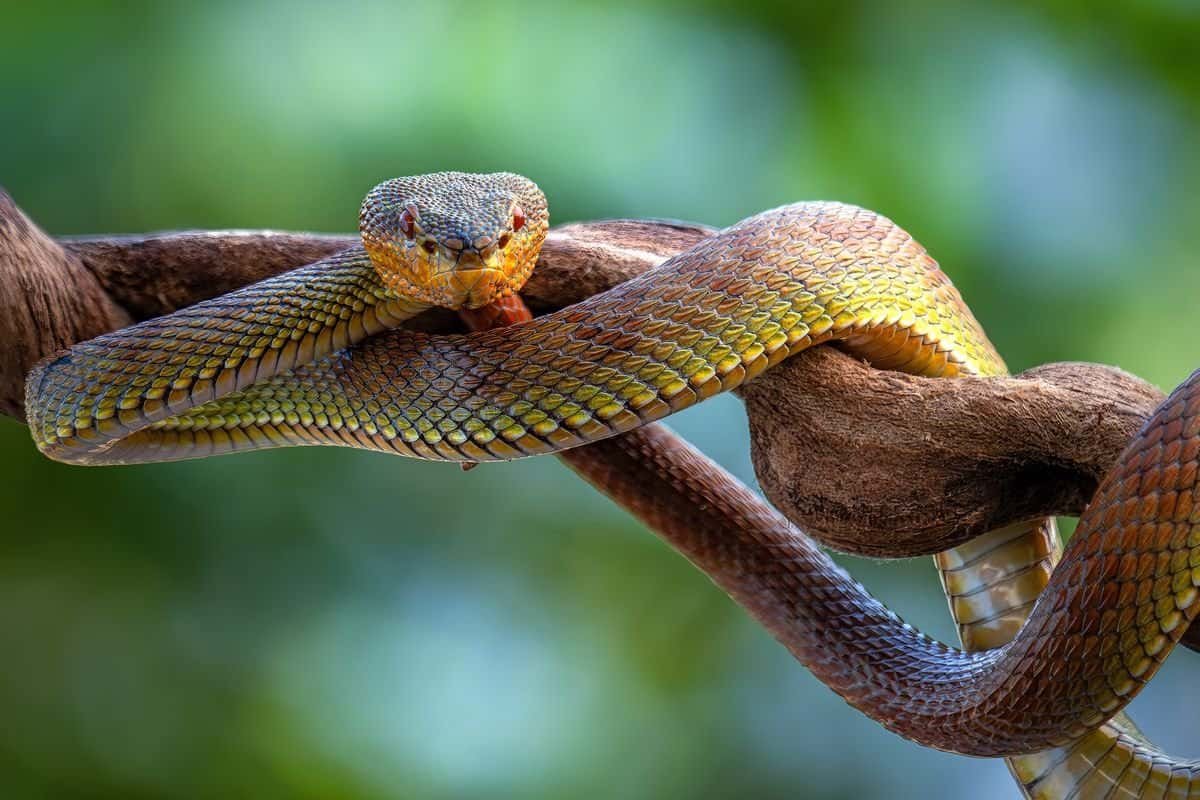
The mangrove pit viper hides out in coastal wetlands across Southeast Asia, sticking to mangrove forests and river shores. Its colors shift to match its home—green, brown, yellow, even pink or purple-brown scales that look just like tree branches.
These vipers grow between 20 and 35 inches long, with females getting a bit bigger than the males. Their patterns help them blend into mangrove trees, coiling around branches where they’re nearly invisible. It’s hard to spot one because they stay so still, waiting for prey to wander too close before striking with a venomous bite.
The patterns on their skin don’t just help them hide—they also help regulate body temperature in hot, humid mangroves. If you ever visit mangrove areas, look carefully. These pit vipers are experts at staying unseen until the very last second.
How Snake Camouflage Works
Snake camouflage relies on three main tricks that work together to make these reptiles almost invisible. They use colors and patterns that match their surroundings, blend with different environments, and change their behavior to stay hidden from both predators and prey.
Coloration And Pattern Adaptations
Your ability to spot a snake often depends on how well its colors match its habitat. Desert snakes usually have tan, brown, and sandy colors to blend with rocks and soil.
Forest snakes show off greens and browns that mirror tree bark and leaves. Some have disruptive coloration—bold patterns that break up their body shape, making them harder to recognize.
Cryptic coloration is another big adaptation. This involves colors and patterns that closely match background textures—a snake might have mottled browns that look just like fallen leaves.
Some species can even tweak their coloration a bit based on temperature or lighting. That helps them keep their disguise going at different times of day.
Common camouflage patterns include:
- Stripes that mimic grass or branches
- Spots that look like shadows on rocks
- Solid colors that match bark or sand
- Zigzag patterns that confuse the eye
Environmental Blending Techniques
Different habitats call for different camouflage tricks, and snakes have really honed their skills. In rocky spots, you’ll see species covered in gray and brown patches, almost vanishing against stone surfaces.
Vine snakes in tropical forests have long and thin bodies, painted in greens that make them look like living branches. Sometimes they even sway a bit, almost like they’re trying to be leaves in the wind.
Ground-dwellers usually show off earth-tone patterns that copy soil, dead leaves, and scattered rocks. Their scales sometimes pick up textures that take the disguise to another level.
Aquatic snakes take a different approach. You’ll notice dark backs and pale bellies, so from above or below, they just fade into the water.
Desert species go for light backgrounds, often with darker spots that throw little shadows—makes them almost impossible to spot among sand, rocks, and scraggly plants.
Behavioral Strategies
Camouflage isn’t just about looks—snakes use behavior to seal the deal. Many freeze up completely when they feel threatened, trusting their colors to do the hard work.
Some are picky about where they rest, choosing spots where their colors actually work. A brown snake will tuck itself onto bark or among dry leaves that match its shade.
Freezing behavior pops up a lot when danger’s close. The snake just stops, turning into a stick or a rock—at least to the eyes of a hungry predator.
Certain species will actually move around to find backgrounds that play to their strengths. They’re not just lucky; they’re strategic about where they blend in best.
Timing matters too. Plenty of camouflaged snakes get busy at dawn or dusk. The low light helps their disguise work overtime.
The Benefits of Camouflage For Snake Survival
Camouflage gives snakes a real edge in life. It keeps them hidden from animals that want to eat them and helps them sneak up on their own meals.
Avoiding Predators
Lots of animals hunt snakes. Birds like hawks or eagles can spot their prey from way up high. Mammals—foxes, mongooses, even badgers—aren’t shy about grabbing a snake if they can.
Camouflage acts like a safety net. When a snake blends in with rocks, sand, or leaves, predators can stroll right past, none the wiser. Staying perfectly still just seals the deal.
Common predators of snakes include:
- Birds of prey (hawks, eagles, owls)
- Mammals (foxes, badgers, mongooses)
- Other snakes
- Large lizards
Some snakes look just like sticks or dead twigs. Others vanish into desert sand or leafy forest floors. It’s wild how often this simple trick saves their lives.
Enhancing Hunting Success
Snakes have to eat, and camouflage turns them into expert hunters. Many just wait, letting prey wander right up instead of wasting energy on a chase.
When you can’t spot a snake, neither can a mouse or bird. Prey comes close, thinking it’s just a rock or a branch, and then—snap—the snake strikes before anything can react.
Hunting advantages of camouflage:
- Prey doesn’t see the threat coming
- Snake saves energy by lying in wait
- Better odds of landing a meal
- Can even target bigger animals that aren’t on alert
Vine snakes are a textbook case. They look so much like green branches that birds land right next to them, totally clueless. By the time the bird realizes, it’s already too late.
Camouflage Master Snakes: Conclusion
These snakes really show how clever nature can get. Each one has its own unique trick for staying hidden and snagging a meal—it’s honestly kind of wild.
You’ve seen snakes that can:
- Change colors to blend right in
- Mimic tree bark so well you’d walk right by
- Vanish into leaves and grass
- Disappear among rocks
Next time you’re out in nature, just remember: these masters of disguise could be right there, invisible to you but watching everything. Their camouflage is what keeps them going in a tough world.
Some go for bold patterns that break up their outline. Others prefer low-key shades that match the ground. A few even shift their skin color—almost like a chameleon, though maybe not quite as dramatic.
So why are these snakes so good at hiding? Evolution’s had a long time to work its magic. Their colors, patterns, and even the way they move all play a part.
Honestly, it’s best to admire these reptiles from a distance. The way they just melt into their surroundings is something else. Whether they’re in forests, deserts, or water, each one has figured out how to stay out of sight.
These camouflage pros are proof that nature always has a few tricks up its sleeve. Sometimes, the most amazing animals are right there—you just don’t see them.
Leave a Reply